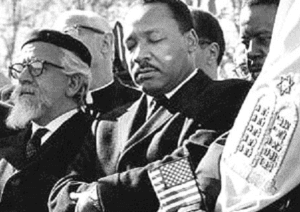America’s Unfulfilled Promises to Freed Black People
By Dr. Mario D. Wallace
After more than 300 years of chattel slavery, African descendants, forcibly brought to the United States and held in bondage, were promised a new beginning after the Civil War. Upon emancipation, they were given the hope of equality, land, and opportunity, supposedly enshrined in law and practice. But, as history shows, those promises were systematically undermined, leaving freed Black people to navigate a hostile landscape rife with broken commitments. The nation, in its pursuit of Reconstruction, failed in the eyes of those it had long oppressed.
The Freedmen’s Village: A Short-Lived Opportunity
One of the earliest efforts to integrate freed Black individuals into American society was the establishment of Freedmen’s Village in Arlington, Virginia, a few miles from the White House. Ironically, this village was built on the former slave plantation of Confederate General Robert E. Lee. Today, it is the site of the Arlington National Cemetery, where many of America’s presidents are buried.
Freedmen’s Village was designed to educate newly freed Black people on the fundamentals of living in a free society. Basic skills like saving, banking, and becoming financially viable were taught, along with reading, writing, and mathematics. The expectation was that freed individuals would absorb these lessons in a mere six months before moving on to become self-sufficient. However, this was an unrealistic timeline, especially given the immense trauma and challenges these individuals faced after centuries of bondage.
Due to political pressure and the assassination of President Lincoln, Freedmen’s Village was short-lived, existing for only a few years. A fraction of freed Black people had the chance to experience its education. It marked America’s first failure to deliver on its promise to its newly emancipated citizens.
The Collapse of the Freedman’s Savings Bank
The Freedman’s Savings Bank, established in 1865, was another promise designed to help Black Americans integrate into a functioning economy. The bank was a beacon of hope, with branches in over 30 cities, offering thousands of freed Black people a safe place to save their earnings. For nine years, it symbolized financial stability and a chance to escape poverty.
However, mismanagement, risky investments, and corruption led to the bank’s collapse in 1874. This failure resulted in the devastating loss of life savings for countless Black depositors. The closure of the Freedman’s Savings Bank shattered Black Americans’ fragile trust in financial institutions and represented another broken promise during Reconstruction.
“Forty Acres and a Mule”: A Promise Reversed
Perhaps the most infamous broken promise was Union General William T. Sherman’s Special Field Order No. 15, issued in 1865. This order set aside 400,000 acres of confiscated Confederate land along the coasts of South Carolina, Georgia, and Florida for redistribution to freed Black families in 40-acre plots. The promise of land ownership, coupled with the potential loan of surplus mules, was meant to provide freed Black people with a path to economic independence.
Yet, the assassination of President Lincoln and the rise of President Andrew Johnson saw this promise unravel. Johnson swiftly ordered that the confiscated land be returned to its former Confederate owners, effectively stripping Black families of the land they had started to cultivate. By the end of 1865, most of the land that had been redistributed was seized, and freed Black people were left without compensation or means to build a future.
Instead of owning land, many were forced into sharecropping, a system that locked them into perpetual debt and economic dependency on the very landowners who once enslaved them.
Historically Black Colleges and Universities: A Complicated Legacy
During Reconstruction, the establishment of Historically Black Colleges and Universities (HBCUs) provided some hope for Black education. Institutions like Morehouse College and Wilberforce University were founded with the intent of educating freed Black people. However, the reality was that most HBCUs were established by Northern philanthropists, religious organizations, and white politicians, not by Black communities themselves.
Although these institutions served the Black population, their creation was often motivated by compliance with federal laws like the Second Morrill Act (1890), rather than a genuine desire to uplift African Americans. Furthermore, these schools were primarily controlled by white leadership, which profited from their operation. Once again, this was a half-fulfilled promise: education was made available, but under circumstances that limited Black autonomy and control.
Reconstruction’s Demise and the Rise of Jim Crow
The end of Reconstruction in 1877 marked a retreat from any genuine commitment to Black rights. The federal government abandoned its promises to protect the rights of freed Black people, leading to the rise of Jim Crow laws that enforced racial segregation and disenfranchised Black citizens.
Legal barriers, like poll taxes and literacy tests, prevented Black men from voting. Racial violence, carried out by white supremacist groups such as the Ku Klux Klan, terrorized Black communities, ensuring their political exclusion and maintaining the social order of white supremacy.
The era of Jim Crow was a brutal reminder that the promises of freedom, land, and opportunity were hollow. Instead, Black Americans were met with systematic oppression and exclusion, their civil and economic rights stripped away.
The Civil Rights Movement: Progress and Unfulfilled Promises
By the 1960s, the Civil Rights Movement gained momentum, aiming to dismantle the deeply entrenched racial inequalities in American society. Led by figures like Martin Luther King Jr., Malcolm X, and many grassroots activists, the movement forced the nation to confront the injustice of segregation, disenfranchisement, and racial violence. Landmark victories such as the Civil Rights Act of 1964 and the Voting Rights Act of 1965 gave Black Americans hope for meaningful change, promising an end to legalized segregation and protection of voting rights.
These legislative wins were significant in their scope, but despite these legal advancements, America once again failed to fully deliver on its promises:
- Economic Inequality: Although civil rights laws prohibited employment discrimination, they did not address the economic inequities Black Americans had suffered for generations. The failure to enact measures that would meaningfully close the racial wealth gap, such as reparations or large-scale investment in Black communities, meant that many continued to face poverty and job discrimination. While middle-class Black families grew in number, many more were left behind.
- Housing and Redlining: The Fair Housing Act of 1968 sought to end housing discrimination, but practices like redlining—where Black neighborhoods were systematically denied mortgages—continued to cripple Black families’ ability to accumulate wealth through homeownership. This legacy of exclusion has left a deep generational wealth gap between Black and white Americans that persists to this day.
- School Segregation and Unequal Education: Despite Brown v. Board of Education in 1954, which outlawed segregation in public schools, the Civil Rights Movement did not fully succeed in ensuring equal educational opportunities. De facto segregation, underfunded schools, and unequal resources continue to plague predominantly Black schools, perpetuating cycles of disadvantage.
- The Criminal Justice System: While civil rights legislation curbed many forms of racial discrimination, it did not prevent the systemic racism that led to the over-policing and mass incarceration of Black communities. The War on Drugs disproportionately targeted Black Americans, resulting in a prison-industrial complex that traps Black men in cycles of incarceration and disenfranchisement.
- Racial Violence and Resistance: The movement also failed to shield Black communities from the violent backlash of white supremacist groups. The assassinations of Martin Luther King Jr. and Malcolm X were part of a broader pattern of racial violence that continued long after the movement’s legal victories. White resistance to Black progress often took the form of terrorism, further eroding faith in America’s promises.
America’s Legacy of Broken Promises
The failure to live up to the promise of “40 acres and a mule,” the collapse of the Freedman’s Savings Bank, and the limitations of HBCUs are only a few examples of how America failed to deliver on its pledges to Black Americans. Sharecropping, disenfranchisement, and racial terror became the reality for many freed Black people.
In 2024, we still confront the legacies of these failures. The wealth gap between Black and white Americans is staggering. Black communities face systemic inequality in housing, employment, and education. The justice system continues to disproportionately target Black individuals, perpetuating cycles of mass incarceration.
While the Civil Rights Movement of the 1960s sought to rectify some of these injustices, enacting significant legal victories such as the Civil Rights Act and the Voting Rights Act, the fact remains that America has not fully honored its promises to its Black citizens. The movement’s successes were undermined by ongoing economic disparities, housing discrimination, unequal education, and systemic racism, leaving many of the promises unfulfilled. The nation has yet to fully reckon with the repercussions of these broken commitments.
The question we must ask ourselves is: when will America live up to its promise to Black people? The answer, based on the trajectory of history, remains elusive. The checks that were promised to continue to come back marked “insufficient funds.” As we move forward, the struggle to make America accountable to its promises is ongoing. In 2024, Black Americans still await the justice and equality that was promised over a century ago.















